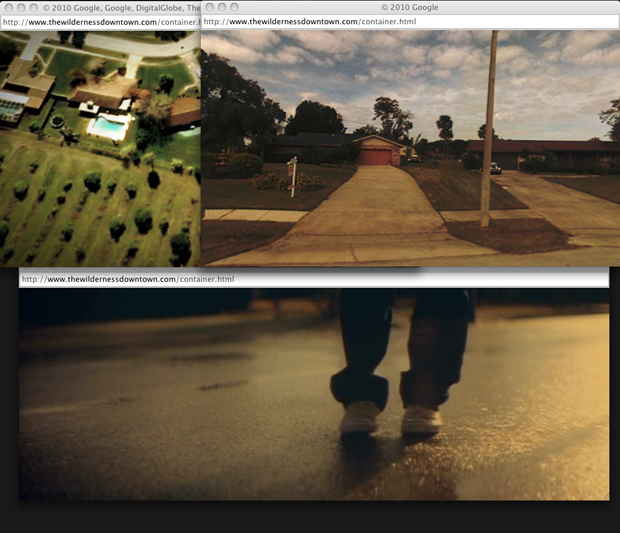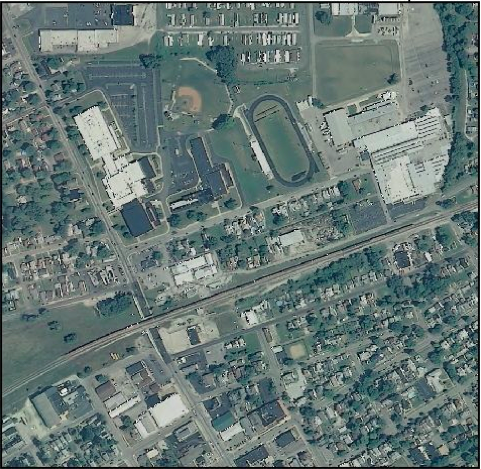Teaching Tuesday: Setting
This week in my novel-writing class, we’re talking about setting. This is the lecture I’ve developed over the years to talk about this subject, which is near and dear to my heart. Midwesterners especially leave setting out of their stories, but we very much need them not to.
Let’s begin
“You have to have somewhere to start from: then you begin to learn,” [Sherwood Anderson] told me. “It don’t matter where it was, just so you remember it and ain’t ashamed of it. Because one place to start from is just as important as any other. You’re a country boy; all you know is that little patch up there in Mississippi where you started from.”
–William Faulkner
Illustration #1
Many apprentice writers write what I call the “Nowhere and Everywhere Story.” Their stories occur in a temporal and cultural vacuum. The setting could just as easily be a small town in Pennsylvania as a small town in Florida, a suburb of Los Angeles as a suburb of New York City, a farm in Oregon as a farm in Ohio.
Most of the time, it’s because they assume that the setting in their head
- is on the page already
- that (since oftentimes the students in workshop are from the same state) its understood that the story is set in the kind of place they are from
- (gulp!) they claim they omitted setting on purpose, since one place is just like any other place.
I wasn’t immune to this problem. I lived the first 21 years of my life in Indiana. I assumed (without really meaning to assume) that the rest of the world was just like Indiana, and my first stories could have been set anywhere, too.
I always try to get my creative writing students to focus on setting, but I often get blank looks. It’s like asking a fish to talk about the water in which it swims. What are you talking about? the fish says. It’s just the world, ya know?
The only way the fish can possibly describe the water it swims in every day, all day, is to remove it from the water—and then put it back.
Or another analogy: living your life is like listening to an LP record. If someone asks, What do you hear? you would describe the music only. You wouldn’t describe the sound underneath the music, the little hisses and pops the needle makes. Maybe you don’t even hear those hisses and pops anymore; you’ve learned to tune them out.
But, if you become a writer, you have to train yourself to largely ignore the music that most people consider “life” and focus instead on the hisses and pops underneath. Nowhere and everywhere must become somewhere.
Illustration #2
“Every story would be another story and unrecognizable if you took up its characters and plot and made it happen somewhere else … Fiction depends for its life on place. Place is the crossroads of circumstance, the proving ground of What happened? Who’s here? Who’s coming?”
— Eudora Welty
I like to begin my in-class discussion of setting with this photograph.
Do you feel anything when you look at that photograph? I ask.
No, my students say.
I wouldn’t expect you to.
Okay, now, if you’ve got a computer with you, go to this website:
http://thewildernessdowntown.com/
Plug in the address of the house you grew up in, or the name of your high school.
Then we watch what happens when our hometown magically shows up in an Arcade Fire video for the song “Wilderness Downtown.”
That’s when I tell them that that aerial photograph is of my hometown, my high school specifically, and even from above, even though I haven’t lived in that town for a long, long time, that picture fills me with many emotions.
I say to them: W hen you were watching your own videos, I saw that they were all a little different. Some of you were looking at suburban gated communities. Some of you were looking at farmland. Some of you were looking at apartment buildings along busy roads.
hen you were watching your own videos, I saw that they were all a little different. Some of you were looking at suburban gated communities. Some of you were looking at farmland. Some of you were looking at apartment buildings along busy roads.
But if I said, tell me about home, you might have neglected to mention those differences. You might have assumed that the picture of ‘home’ in your head is the same as the picture in mine, but it’s not.
When you saw those streets, those houses, those buildings on your screen, you felt things. You felt homesick or anxiety or fear or hatred or nostalgia. That’s what you have to do as writers.
It’s not just about showing the reader a particular exterior landscape. It’s about giving them a particular interior landscape too.
The reader is that figure in tennis shoes and a hoodie running down the street you’ve created, and you’re not just saying This is what this street looks like, you’re saying This is what this street feels like.
Illustration #3
In 2012, I met the writer J.T. Dutton at the Midwest Writers Workshop, and she taught a great session on setting. She’s the author of two young adult novels and teaches at Hiram College at the Lindsay Crane Center for Writing and Literature.
I’ve been using this handout, Setting as Character by JT Dutton, for two years, and it never fails to elicit great material from my students.
She’s very graciously offered to share it with us here at the Big Thing.
HERE IS NOT THERE, OR SETTING AS CHARACTER by JT DUTTON
20 interesting questions to ask yourself as you create the setting of your novel
- How big or small is the place you want to write about? What is the size of the population?
- Where is it located in relation to other landmarks, regions, or worlds?
- What is the landscape like? Is it mountainous or flat? A prairie or desert? What grows there?
- What is the average temperature? Do the seasons change? Does temperature or weather affect how people live and dress? Or how much time they spend outside?
- How do people earn a living? Who is the largest employer? How much time to people spend working each day?
- What is the average income? Are people in his place unusually poor, or unusually well off?
- Who has the power to create change? How is this place governed?
- What are the conflicts between neighbor and neighbor? Is there stratification? Envy or hatred between groups?
- Who is happiest about having to live/be in this place? Who is least happy?
- If the place held an annual celebration, what would it honor? What makes the people of the town most proud? Who marches in their parade?
- How “modern” is it in comparison to the world around it? Is it behind the times? Or does it have its finger on the pulse of fads and fashions? Do the people here look up or down at any other place?
- How clean or safe is it? Do people feel comfortable about leaving their doors unlocked, or does it have an eeriness or grittiness?
- Who is happiest about living or being in this place? who is least happy?
- How moral is it? Do bad people suffer and good people triumph? Or are endings determined by abstract and complicated forces?
- What religion do most people who live here practice? Are residents bound by a certain kind of spirituality?
- What is this place’s biggest flaw in the eyes of a stranger? What is its biggest asset in the eyes of a stranger?
- What is the mood of this place? Is it spooky? Bright? Honest and comfortable? Sad?
- What is the biggest threat to peace and prosperity?
- How vulnerable is this place to change? How sheltered or unsheltered is it?
- Who best represents the town’s image?
There are about a million more things I could say about setting, but I’ll stop there.
Teaching

That worksheet is FABULOUS. Thanks for sharing, Cathy (also, Arcade Fire is one of my fave bands…saw them live a few years back–amazing show!)
That worksheet is FABULOUS. Thanks for sharing, Cathy (also, Arcade Fire is one of my fave bands…saw them live a few years back–amazing show!)
Thank you for this post–it was very informative. I recently wrote a short story that takes place in San Diego, in and out of the Del Mar Fairgrounds. At first I felt hesitant to use this setting, as if it had already been done, or it wouldn’t appeal to a reader. But what else am I supposed to do? I know that setting. I know how to write it because I live here. This blog, and that quote from Faulkner, underscores the importance of my decision (at least to me!) to set my story in the city where I live.
nice. I’d also add that place, setting as character, can be “evil” or full of hate and negative descriptive energy. the place we wish to escape or leave or destroy. These emotions are often overlooked in possible description as the same leveling, “polite,” abstracting impulse that drives “the story could be set anywhere” also sometimes inhibits expressions of vivid vitriol. The DANGERS of place can animate a scene–witness what the Nazis did with the previously innocent idea of the “volk” or the folk. Orestes Brownson in his “The American Republic” concluded that place is almost completely the key to understanding the American idea and ideal. just a thought….
I’ve been following your blog for a while now, Cathy, and even though I teach high school creative writing instead of college, I always find so much applicable value in what you share. Thank you. Place-based writing is kind of my thing, so this post resonated in a big way. On Friday, our class will be held outside, next to the field, beside the woods, under our very particular blue September sky (joy!).
Thanks Emily! Nice to meet you here!
Oh, I am really bad about the “nowhere and anywhere” thing. I have been working on it, and this will really help.
Oh, I am really bad about the “nowhere and anywhere” thing. I have been working on it, and this will really help.
Very helpful and interesting! I write more creative nonfiction at the moment, but I want to dive into fiction too. Although I hesitate to pick my hometown as a setting (seems so boring to me) I think it best to at least pick a place I know to begin with. I really love Stephen Kings way of describing all his towns – Derry and Castle Rock come to my mind. After reading the books several times, I have the feeling I lived there too and know all the people (It, Needful Things f.e.). Same for “Fried green tomatoes” :-). Thanks for the advice, will keep this post as a favourite!